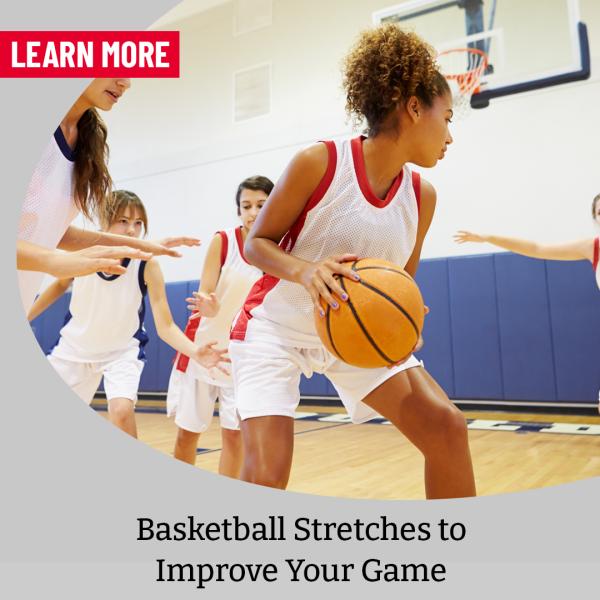
Reviewed and contributions made by Dallas Reynolds, PT, DPT, Cert. DN, COMT and Director of Operations Support – Central Scheduling/Virtual Services
Basketball is a game of coordination, agility, endurance and accuracy. Players of all ages and levels need to be in top shape to keep up with the game’s fast pace. While strength training, cardio workouts and skill development will help athletes during the on and off season, keeping a regular stretching routine will also help players increase their athletic ability and prevent injury.
Get Your Free Physical Therapy Screening
Not sure where to start with physical therapy? Get a free screening and let us help you start the path to recovery today.
GET MY COMPLIMENTARY SCREENING
Stretch to prevent injury
The most common basketball injuries are to the lower body. The ankles, feet, knees, thigh/hips are common pain points for ballers. While upper body injuries still exist (e.g., concussions, jammed fingers, etc.), they are less likely to occur. That said, while it is important to prep the entire body before the tip off, players should spend extra time performing a dynamic warm-up and then save static stretching for post-practice or post-game.
Pre-game: Include a dynamic stretching routine
Research generally shows that dynamic warm-ups yield better results than simply stretching alone. To achieve the best results, players are encouraged to add the following dynamic stretches to their routine prior to even picking up a ball. These exercises include:
- High knees
- Skipping
- Carioca
- Zig-zag side shuffle in defensive stance
- Frankenstein marches
- Walking lunges
- Back pedaling
Basketball requires players to move from several directions. Athletes can move forwards, backwards, sideways, up and down all in the matter of minutes and must sustain these movements for long and short bursts of time. This is why a proper dynamic warm up is necessary – to prep the athlete for competition and help prevent injury.
Post-game: These static stretches are best for basketball
Post-practice or post-game, athletes are encouraged to cool down. So often, especially for younger athletes, they hit the showers before they’ve taken extra steps to aid in their recovery. A proper cool down allows the body to reset faster and then be ready for future play.
This is where static stretching comes in. While a dynamic stretches help warm the body up for competition, static stretching will aid in the recovery and help prevent injury for the days ahead.
Since basketball requires a lot of lower body movement, it is important to spend some time stretching the quadriceps, the hamstrings, the ankles, the calves and the hips. Like with any sport, allocating time to the rest of the body, including the hands, wrists and shoulders is beneficial as well.
The best stretches for basketball players
Here is a list and description of recommended basketball stretches post-game/practice.
Hamstring Stretch
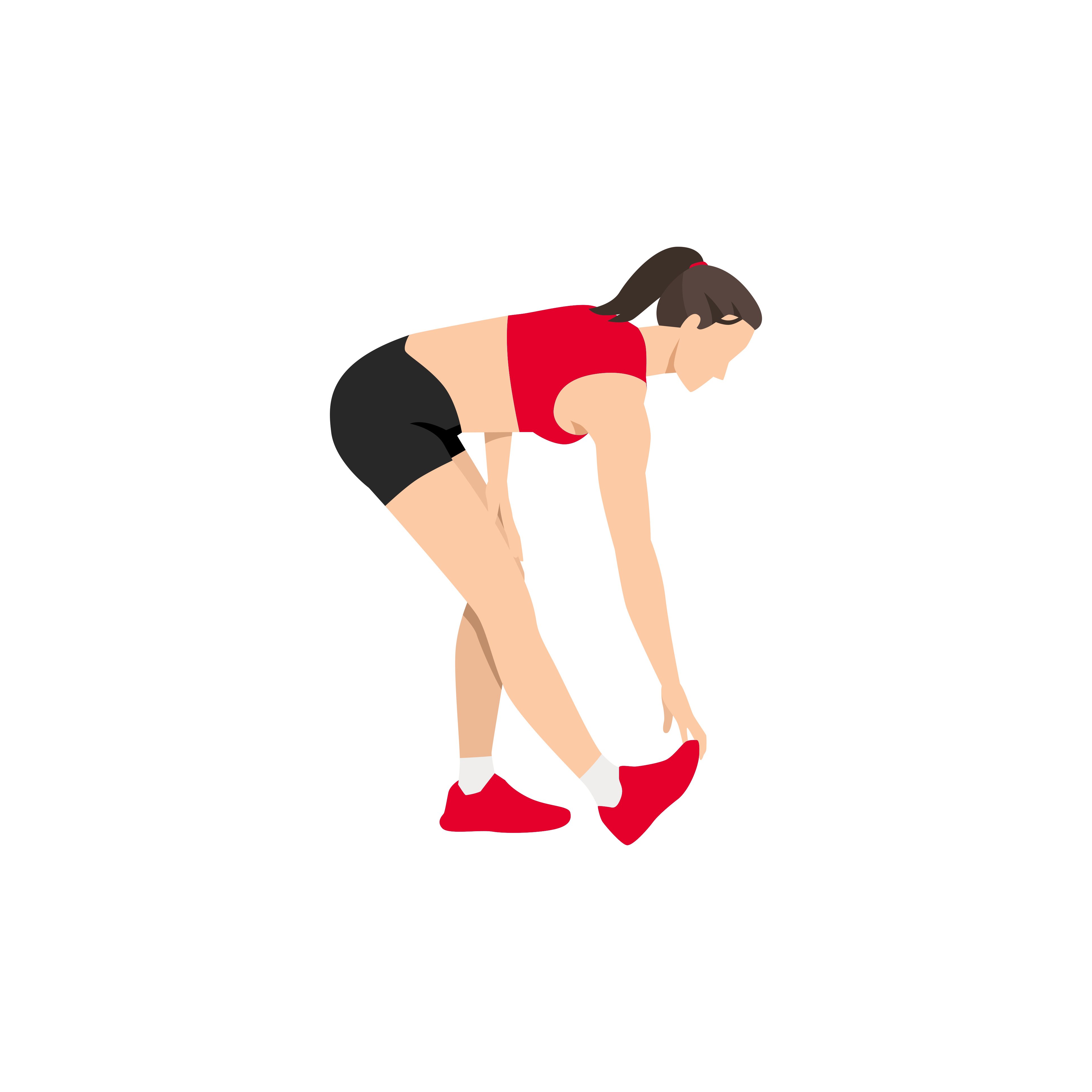
Instructions
- Stand with your feet shoulder width. Step your right foot forward and then flex the foot upwards.
- Bend at the hips, shifting your weight back towards your left foot until you feel the stretch in your right hamstring. Place both hands on your right thigh.
- Hold for 30 seconds before switching to the left leg.
- Complete 3 times per side.
Quadricep Stretch

Use a wall or sturdy surface for support while completing this exercise if necessary.
Instructions
- Stand upright with good posture (i.e., shoulders open, core engaged and body in alignment) with your feet together.
- Raise your left heel up behind you and then grab your foot with your left hand.
- With a slight bend in your right leg, pull your left foot upwards towards your buttock until you feel a stretch in your left quadricep.
- Hold the position for 30 seconds before moving to the opposite leg.
- Perform the stretch 3 times per side.
NOTE: The quad stretch is very popular but is also performed incorrectly on a regular basis. It is important to maintain good posture throughout the stretch, keep a slight bend in the standing leg (opposed to locking it out) and keep your hips in alignment to maximize its benefits.
Calf Stretch (aka Gastroc Stretch) 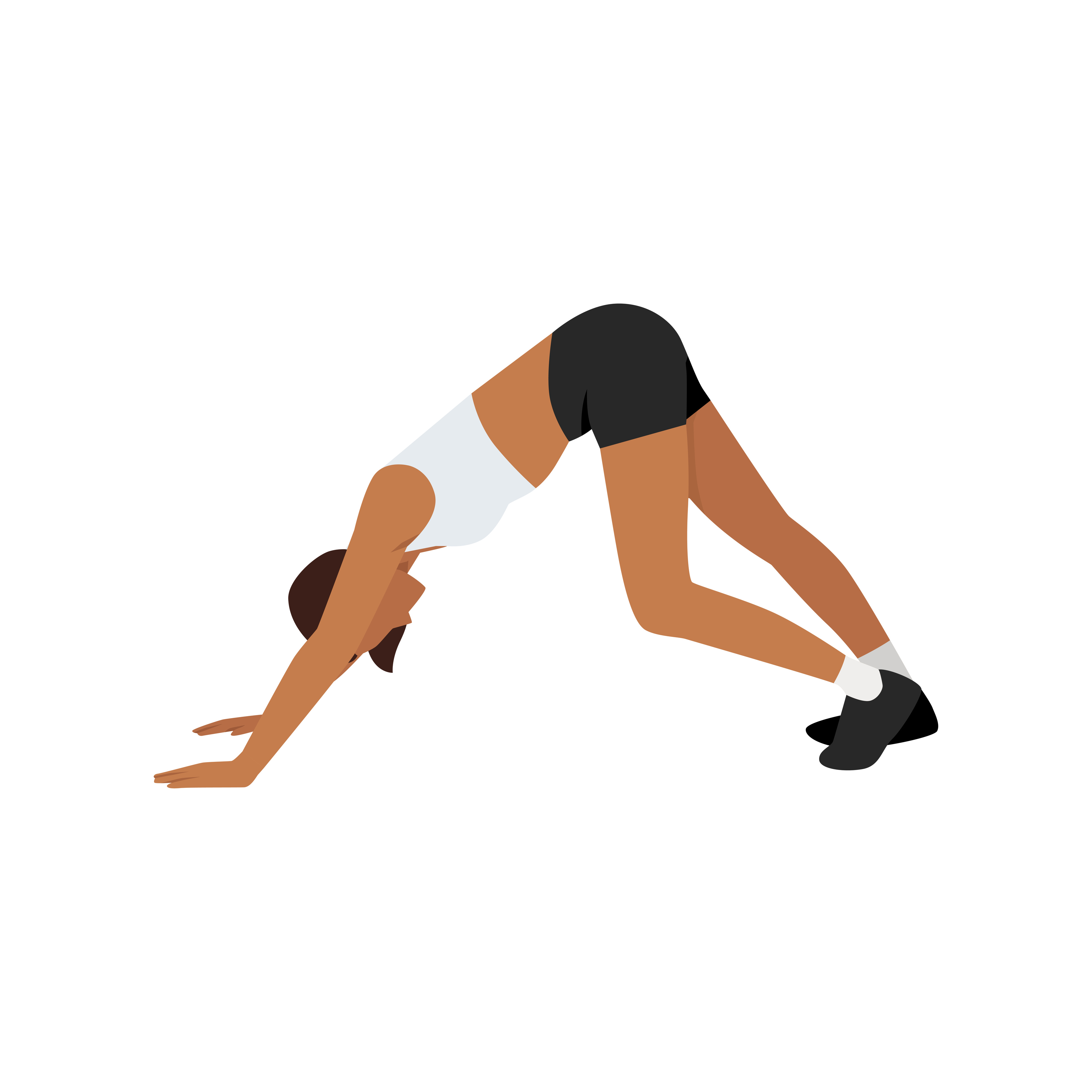
Instructions
- Stand with your hands placed against a wall. The foot should be placed back with the other foot forward in a slight lunge position.
- Push towards the wall, keeping your back calf straight and your heel against the ground.
- Hold this position for 30 seconds and then release. Complete the stretch 3 times per side.
Figure Four Stretch
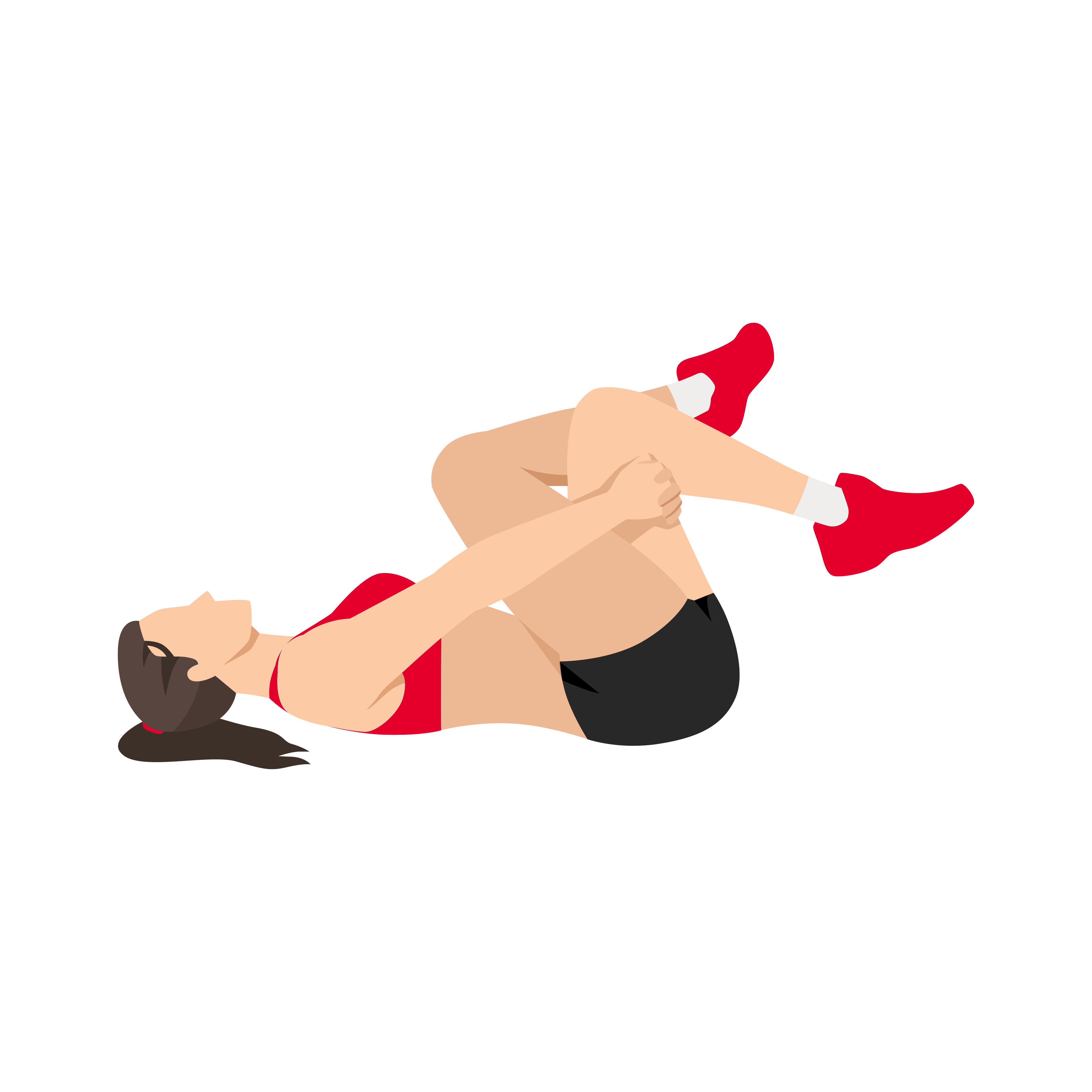
This stretch will release tension in the hips and glutes.
Instructions
- Lie on your back with your feet flat on the floor.
- Bring your right ankle over the top of your left knee.
- Raise your left knee towards your chest. Then reach through your legs with your right hand and interlace your fingers with your left just below your bent knee.
- Keeping your shoulders on the ground, gently pull your leg towards you until you feel a stretch in your right hip and glute.
- Maintain this position for at least 30 seconds before switching to the other side. Complete 3 times per side.
Shoulder Stretch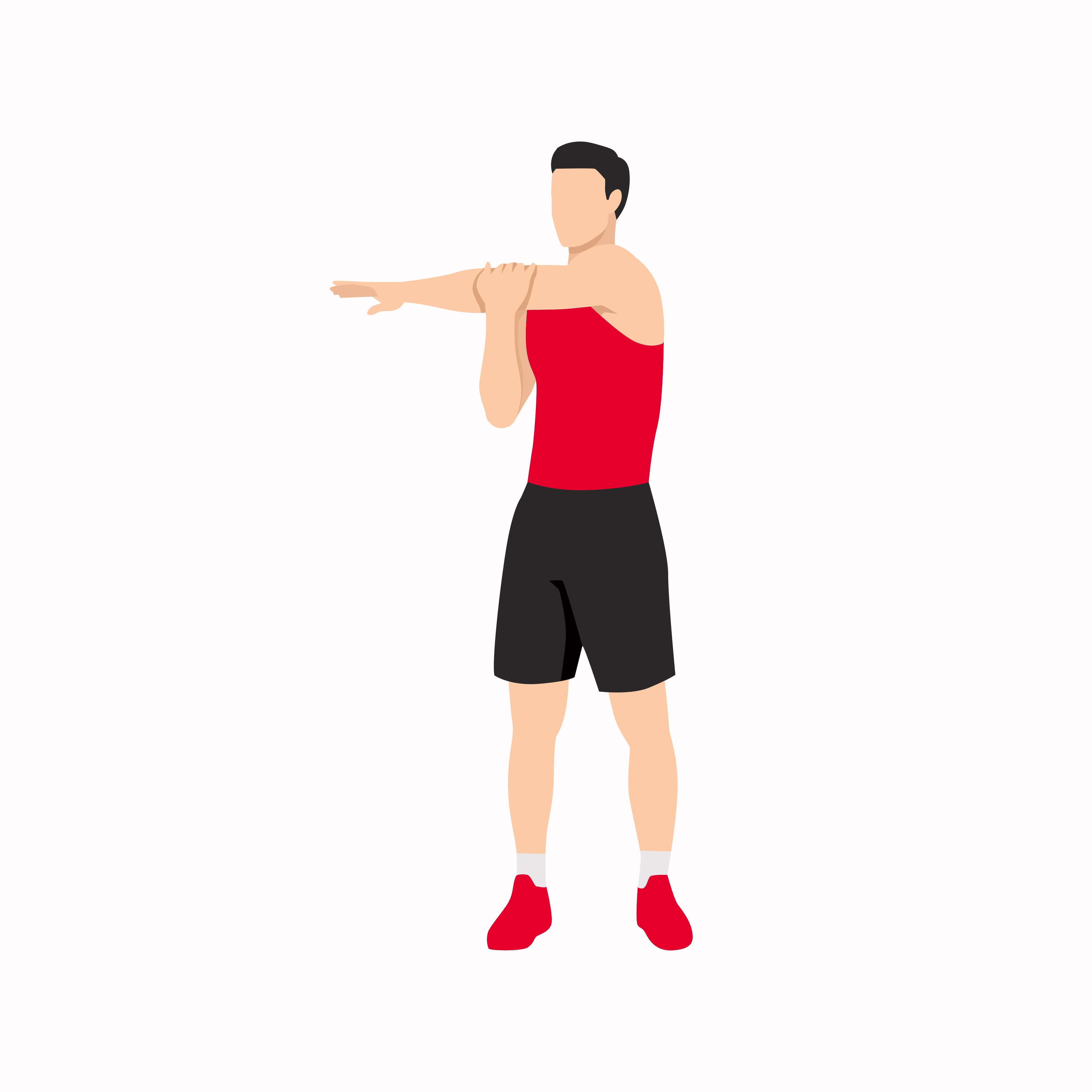
Instructions
- Stand with your feet shoulder width apart.
- Relax your shoulders and then bring your right arm parallel across your chest.
- Use your left hand or forearm to gently pull the arm in closer to your chest.
- Hold for 15 to 30 seconds and then repeat on the opposite side. Complete 3 times.
Triceps Stretch
Instructions
- Bring your right hand straight up overhead and then bend at the elbow, bringing your right hand to your upper back.
- Bring your left-hand overhead to your right elbow and then gently push down to until you feel a gentle stretch.
- Hold for 15 to 30 seconds and then repeat on the opposite side.
Complete 3 times.
See an ATI athletic trainer and take your game to the next level
Performing dynamic stretches pre-game and then static stretches post-game, will help basketball players at all levels improve their performance, aid in recovery and prevent injury. In addition, while there are a lot of skills and drills basketball players can do on a regular basis, it is equally important to take time during and off-season to improve their strength, coordination, flexibility, agility and endurance. Working with an experienced athletic trainer like those at your local ATI, can help your basketball player become a more well-rounded athlete overall and prevent injury.